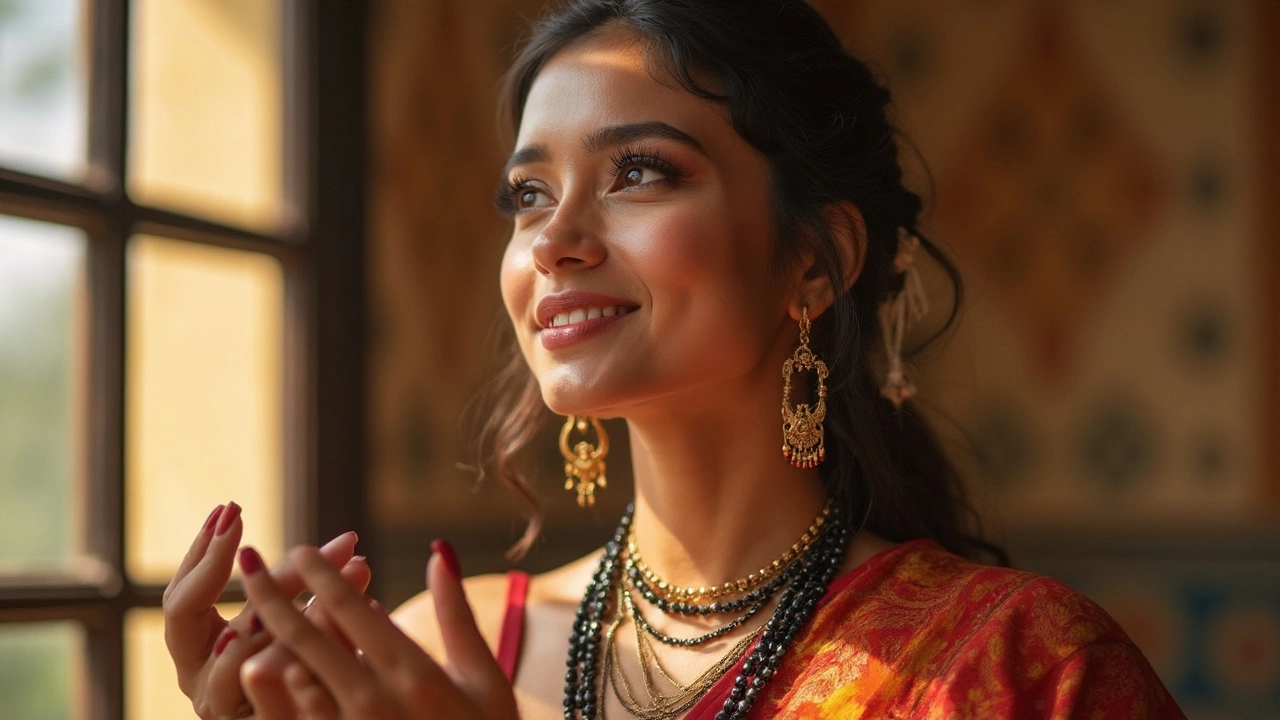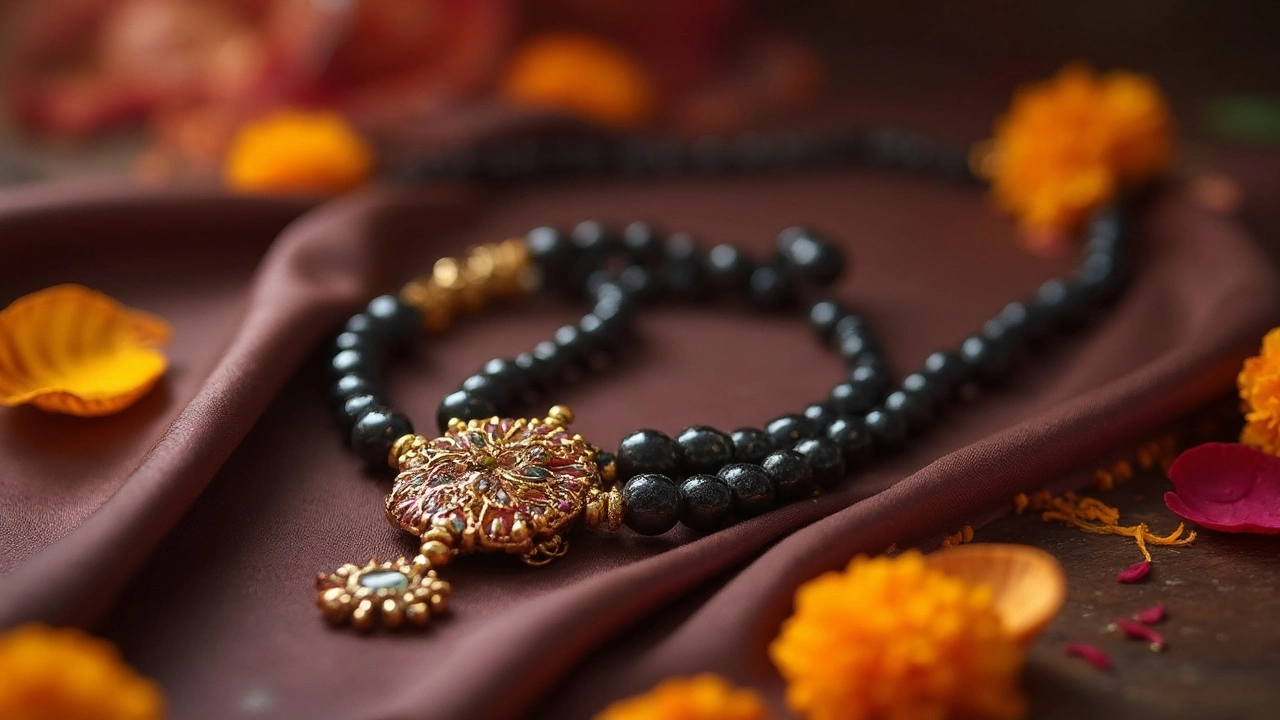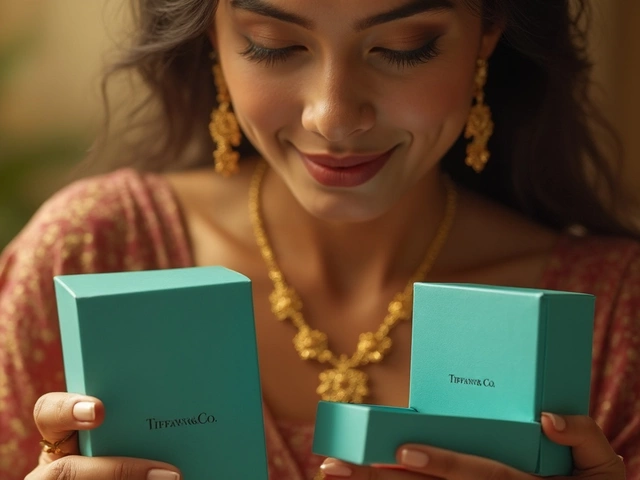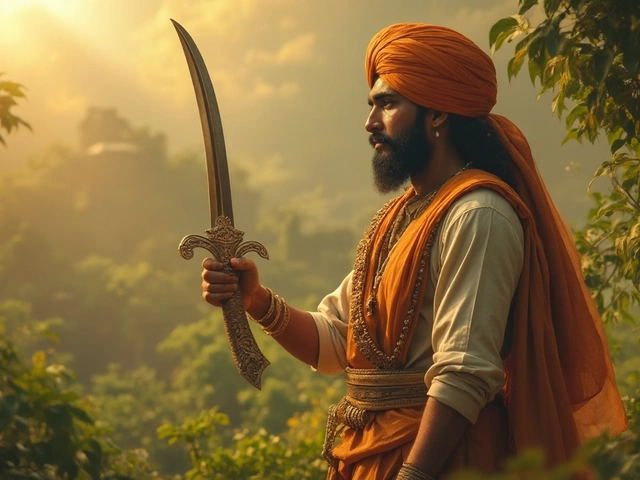Black beads in a mangalsutra aren’t just about looks—they’re believed to protect marriages from negativity and evil eyes. But here’s what hardly anyone tells you: not every community sticks to the black bead rule. Plenty of designs play around with gold, diamonds, and even colored stones these days.
If you're getting married soon or just shopping for a mangalsutra that feels right, you might be stuck between tradition and what you actually want to wear daily. Maybe your mom swears by the black beads, but your friend’s mangalsutra is pure gold, no black in sight. So, what really matters? Does skipping the black beads change anything, or is it all about personal and family preference now?
- Why Black Beads? The Real Meaning
- Tradition vs. Modern Designs
- Is It Really Mandatory?
- Tips for Choosing Your Ideal Mangalsutra
Why Black Beads? The Real Meaning
The black beads in a mangalsutra aren't just about making it stand out—they're full of symbolism. In Hindu culture, folks believe black beads soak up and block negativity. Think of them as a kind of old-school protection shield, meant to keep evil eyes or bad vibes away from the marriage and the person wearing it.
Dig a little deeper and you'll find every bead is supposed to represent a bond or promise between husband and wife. Back in the day, people thought these beads actually helped keep couples healthy and safe. That's why most traditional mangalsutras make black beads the main feature, not just a design choice.
Here’s a quick look at the typical meaning for black beads in different regions:
| Region | Belief About Black Beads |
|---|---|
| Maharashtra | Evil eye protection and strong marriage bond |
| South India | Warding off negative energy |
| Gujarat | Long married life and harmony |
| Punjab | Happy family life and good luck |
There’s also the style factor: traditionally, the black beads were strung in a set pattern, and some families would even specify the exact number of beads. Nowadays, designs can skip a bead or two (or even drop them completely) depending on what the couple wants. But for those who value tradition, black beads hold a special place.
- If you’re getting a mangalsutra and want to follow tradition, make sure the black beads are part of the design.
- Ask your family if they have any specific rules—some families are very particular about the number and the pattern of beads.
- If you're more about personal style, don't stress. Plenty of new-age mangalsutras are mixing things up while still respecting the roots.
Tradition vs. Modern Designs
Even if you ask three different jewelers about the mangalsutra design, you’ll probably get three totally different answers. Traditionally, black beads were a must—Hindu customs, especially in states like Maharashtra and South India, connect these beads with keeping away bad vibes and symbolizing the husband’s long life. Older mangalsutras often had two strings of tiny black beads, sometimes separated by gold spacers, and not much else. It was a strict look, almost like a rulebook for how a married woman should dress.
These days, things have really shifted. Young couples want their mangalsutras to look good with jeans or office wear, not just sarees. It's not unusual to find mangalsutras with single strings, gold chains with delicate pendants, diamonds, and even colored stones instead of black beads. Some brands in 2024 reported that about 35% of their mangalsutra sales are new-age patterns—minimalist designs, short chains, and sometimes even bracelet or ring mangalsutras.
Check out this quick comparison between typical features of old-school and modern mangalsutras:
| Traditional Mangalsutra | Modern Mangalsutra |
|---|---|
| Double strings of black beads | Single string or thin gold chain |
| Big, gold pendant with intricate work | Small, geometric or diamond pendants |
| Length goes below the chest | Choker or mid-length styles |
| Meant for daily wear with traditional outfits | Designed for both Indian and Western wear |
| Black beads as a required element | Sometimes no black beads at all |
Some people still stick to the classic looks out of respect for family or community. But, hey, it’s not rare to see a bride totally skipping the black beads or mixing in new elements. The real change? Designers are making mangalsutras that let women show their own style while still nodding to their roots.

Is It Really Mandatory?
Time to clear up the confusion: in India, there’s no nationwide rule that says it’s compulsory to have black beads in every mangalsutra. It’s more of a tradition that’s grown over time, and the details depend on where you’re from, your family, and even your personal taste.
For example, in North Indian weddings, black beads are pretty common in mangalsutras. But in states like Maharashtra, Tamil Nadu, or Gujarat, you’ll see some mangalsutras with only gold, or even totally different styles—like the Maharashtrian ‘Thali’ or Tamil ‘Thaali’, which may not have any black beads at all. The meaning and the must-have elements change a lot from place to place.
Check out how it varies by region:
| Region/Community | Typical Mangalsutra Style | Black Beads Used? |
|---|---|---|
| North India (Hindu) | Gold with black beads | Yes, mostly |
| Maharashtra | Vaati or beads (sometimes all-gold) | Sometimes |
| Tamil Nadu | Yellow thread with gold pendant (Thaali) | Rarely |
| Gujarat | Gold and some beads, can be all-gold | Optional |
| Christian Goan | Gold chain, no beads | No |
Bigger jewelry brands have also confirmed: customer requests are all over the place these days—some people want all gold, some want more diamonds, and some skip the black beads altogether. There’s no legal requirement, and priests or pandits usually go with what’s meaningful to the couple and family. But some families may still insist on black beads to stick with tradition, especially if they believe it wards off negativity.
If you want to go beadless or try something brand-new, the best tip is just talk to both families before finalizing. Most couples end up going with a design that feels special and works for their everyday style anyway.
Tips for Choosing Your Ideal Mangalsutra
Picking out the right mangalsutra isn’t just about what your family expects—it’s got to fit your style and comfort too. No one wants a chain that feels awkward or sits in the cupboard unused. Here are some solid tips to help you find one that checks all the boxes.
- Mangalsutra designs come in many shapes and styles now. If black beads matter in your family tradition, make sure they’re included. Otherwise, you can go with plain gold, diamonds, or even minimalist chains. Some North Indian families use yellow beads, while Maharashtrian mangalsutras often have two vatis (small gold cups) instead of the black beads.
- Comfort is key, especially if you plan to wear it daily. Lighter chains don’t snag and are easier to tuck under work clothes. The regular length most women choose is between 16 to 24 inches, so make sure you try a few before picking.
- If you want something durable, check for hallmarked gold (BIS certified). For diamond-studded or stone designs, always check that they’re real and certified. About 70% of Indian brides pick mangalsutras with both black beads and gold to balance tradition and modern look.
- Budget matters. Gold prices can change quickly. Here’s a rough idea of what you might pay in 2025:
| Design Type | Average Weight (grams) | Estimated Price (INR) |
|---|---|---|
| Simple Black Bead | 7-12 | 38,000 - 65,000 |
| Gold Only | 10-16 | 54,000 - 85,000 |
| Diamond Studded | 12-18 | 1.1 lakh - 3.5 lakh |
Before you buy, double check if there are any family customs you might forget—some families have rules about length, number of black beads, or certain symbols. Take your time and don’t rush. The goal is to feel good and confident wearing your mangalsutra every day, not just on your wedding day.



